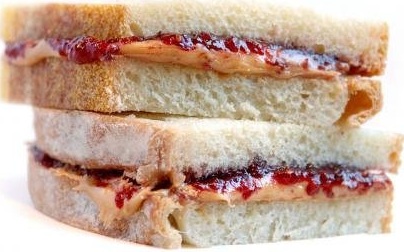Those in the education world — parents, teachers, politicos alike — hear near-constant consternation about underperforming inner-city schools. We cannot seem to decide whether the teachers are unqualified, the curriculum is inappropriate or the budgets are too small. However, for many of these schools, there could be a simple way to improve academic performance. It’s something we in the public health world call, in academic speak, a peanut butter sandwich.
Many big public schools are overcrowded to the point that students have to stagger their lunches. This means some kids are eating lunch at 10 a.m. and others at 2 p.m. Considering that a lot of these kids skip breakfast, many of them are going eight hours or more without anything to eat. In fact, a 2013 report by No Kid Hungry, a nonprofit working toward ending childhood hunger, found that 73 percent of teachers say they have students who come to school hungry on a regular basis. Feeding America and the USDA report that, in 2012, 15.8 million kids in the U.S. didn’t have reliable access to food. This hunger, combined with the long wait to eat or the very early lunch, has two big impacts on these kids’ lives.
The first is that it is nearly impossible to learn when all you can think about is food; more than one study has linked hunger to poorer grades. This means our kids are showing up to school hungry, and many of them are not allowed to eat for hours on end, which torpedoes their academic performance. If you ask teachers about this, some will tell you their kids are eating plenty. During a passing period students will run to the vending machines, grab a Pop-Tart and an Arizona Iced Tea, and scarf them down as fast as possible between classes. While this may provide the raw calories these kids need to live, breakfast pastries and soda are far from brain food. In fact, lower-quality diets have been shown to have a negative effect on academic performance independent of hunger. And though the food in the cafeteria is not by any means perfect, it is typically better than the stuff students buy in the frenzied minutes between history and math.
[one_fourth]
[/one_fourth]
The second big problem with the long periods that these kids go hungry is that, from a health standpoint, the effects of hunger are more insidious than simple distraction. Though it may sound counterintuitive, inadequate access to food is associated with higher weight, because hungry people are more likely to eat more than they need to and store more of that food as fat. So while at first student hunger may seem like an education issue, it quickly becomes a big health problem. Not only do hungry kids’ poorer grades make it harder for them to get into college, which has a massive negative effect on their lifelong well-being, but this hunger could also be contributing to the high rates of childhood obesity.
Luckily, it’s a pretty simple problem to solve. When I was a holistic health counselor at a public high school on Coney Island (through Dr. Oz’s HealthCorps initiative — yeah, that Dr. Oz), I asked the guidance counselors to send me students who would regularly either fall asleep or start fights at 10 a.m. or 3:00 p.m. — the hungriest hours. My theory was that these kids were not angry or petulant, but instead were acting out the effects of their hunger. My prescription? Peanut butter and jelly sandwiches. PB&Js were an easy, delicious and culturally acceptable way to get healthy energy into students who were struggling so mightily against their own biology. While my results were far from scientific, many of the students I worked with ended up with better grades and fewer trips to the counselor’s office.
PB&Js are far from a panacea. A sandwich cannot address the funding issues, crumbling infrastructure or myriad social burdens our schools and students face in their struggle to learn. However, when we don’t give our students enough food to fuel their brains, we set them up to fail. If we are serious about improving educational achievement and ending childhood obesity, we have to make sure our students have the most basic tools they need to succeed, which in many cases might involve peanut butter and jelly.






